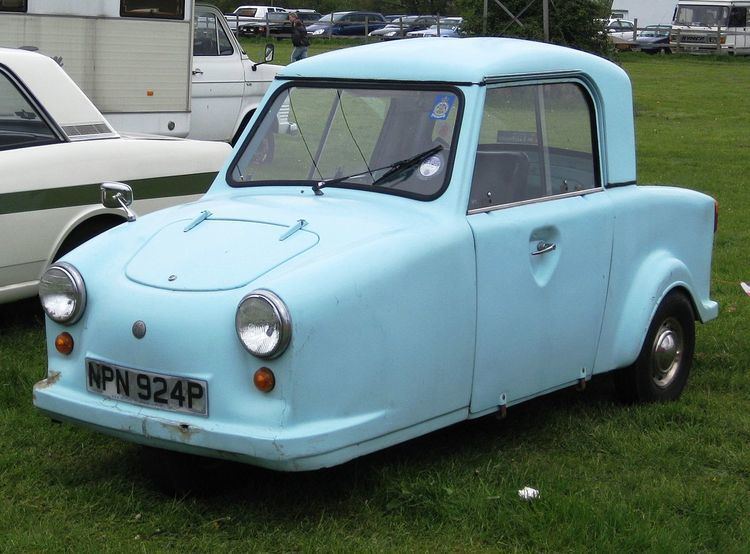 | ||
A range of small vehicles have been produced by various manufacturers since the 1950s that have been specifically designed to be driven by a wheelchair user, without the need for the user to transfer from their wheelchair. This distinguishes them from the majority of adapted cars, which are designed to be driven from a conventional driver's seat, whether the driver is a wheelchair user or otherwise impaired. They can be considered a sub-class of Wheelchair Accessible Vehicles, which are predominantly converted mass-production models.
Contents
History
Makers of cars for wheelchair users included AC Cars in England, Fend in West Germany, Simson DUO in East Germany, SMZ in the Soviet Union and Velorex in Czechoslovakia.
The Duo was made initially by VEB Fahrzeugbau und Ausrüstungen Brandis (VEB FAB) from 1973 until 1978, whereupon manufacture was transferred to VEB Robur, more famous for making trucks in Zittau. Because many of the components are common with the Simson, the Duo is often classified as a Simson. Production ceased in 1989.
In the United Kingdom in the 1960s and 1970s, the Invacar was a low-cost, low-maintenance vehicle designed specifically for people with physical disabilities. Vehicles supplied by the National Health Service had three wheels and were very lightweight, and therefore their suitability on roads amongst other traffic was often considered dubious on safety grounds. The last ones were withdrawn from the road in 2003, 27 years after the end of production, though some are still in existence. A 1976 example, one of the last made, is on display at the National Motor Museum in Hampshire.
Recent Production Models
Several models are currently being produced:
